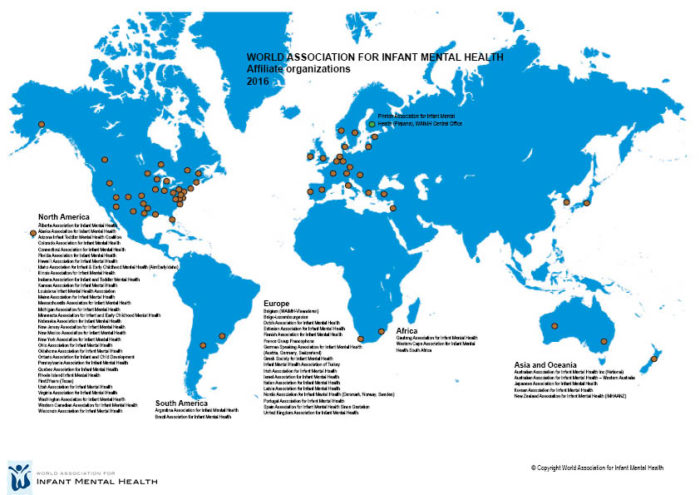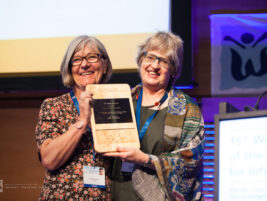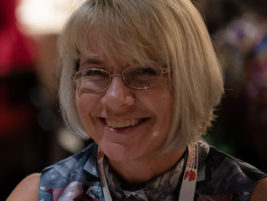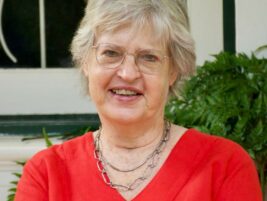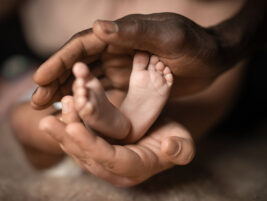When we hear the name Fukushima, most of us probably remember the triple catastrophe of a strong earthquake, huge tsunami wave following it and the terrible accident in the nuclear power plant that took place on March 11th, 2011 in the Tohoku area in Japan. As a consequence of those disastrous events over 18 000 people died or went missing, and a huge number of families were forced to relocate from their homes to other areas because of destruction of their homes or nuclear radiation pollution. I had the honour of visiting the Tohoku area in 21st – 24th November 2014, to give a lecture in the national Four Winds Congress in Kooriyama and attending the first annual board meeting of the WAIMH Japanese Affiliate. Three and a half years after the disastrous events, what struck me first when arriving to Kooriyama was how normal everything looked: the city was busy, people were going about their business and sun shone on a beautiful autumn day. For my first day my host, Professor Hisako Watanabe first took me to see a thing I have not seen anywhere else: an indoor playground with big areas of sand and water where children could play as if they were outdoors, lots of air-filled mattresses for running and jumping, and little kitchens where children could learn to cook healthy snacks for themselves. This was the PEP Kids Kooriyama, a playground that was funded by a private entrepreneur who donated it to the city. The playground opened for Christmas 2011 where children could play for free. Since its opening, 1,000 000 children and their parents have played in PEP Kids.

Professor Watanabe had also organized for me a trip to the countryside, to the smaller town of Date. On that trip, riding across the countryside by train and car, I noticed the first signs of being in a disaster area: radiation meters by the roads and men at work, peeling the topmost layer of the earth and storing it into big plastic containers that were piled by the roadside. In Date I met Mrs. Kanae Narui, clinical psychologist of the NPO Heartful Heart for Nuturing the Future, community nurses and an occupational therapist of the Date Health Care Center. Mrs. Narui kindly let us observe while she and her team attended to a group of local ladies aged from 75 to 85 years.
What I saw was a brilliantly led group intervention. I also learned how far reaching the consequences of the disaster still were. Almost all younger families had left the area in 2011 and were afraid to come to visit their parents, thus making it impossible for these grandparents to see their grandchildren. The loss of their children and grandchildren and the prospect of not having anyone to continue the farming was causing health and family problems for many of the women. The session ended with a hilarious session of laughter yoga that we visitors were also allowed to take part in. Laughter yoga has a simple principle: you make laughing sounds like hahaha or hohoho, clap your hands together in the same rhythm, and when you do this while also making eye contact with another person you cannot but start laughing for real. It certainly does not make any difference where you come from, how old you are or what language you speak: shared joy is something that unites us! On our way back to Kooriyama we also drove through a ghost town that had been abandoned due to high radiation levels, where only beautiful houses, library and schools now stood empty. While we drove back we also saw a group of children singing Christmas carols beautifully – later I heard it was the first time in three years that they had been able to do that, as the recommended time spent outdoors had now become unlimited.
In the Four Winds National Congress I felt that I learned more about trauma and resilience than I was able to teach with my own lecture. I was most impressed by how the local professionals from every possible field from engineers to teachers, health care professionals to parents, business men and workers had worked together through the years after the disaster to build a healthy and sustainable community for the children. In the Fukushima area Dr. Shintaro Kikuchi had been the leading force in organizing services that the children needed. In the Miaygi district Dr. Hiroaki Homma had done a huge task in organizing mental health services for children and families. In the Iwate district Dr. Hiroko Suzuki had recognized the specific posttraumatic symptoms caused by earthquake in children and parents, and organized care for treating them.
Throughout the Congress the local professionals described creative and effective solutions for treating traumatized children, ranging from health promoting solutions for providing exercise and fun to children to group interventions in day care centers and schools. The fact that many health care professionals also lost their lives in the disasters made it imperative to create more and long standing co-operation between health care professionals, day care personnel, teachers and parents. What I also learned is that the best way of gaining people’s trust and confidence in the services offered is to work through the local, familiar staff. A good example of this was Professor Watanabe’s own approach: by contacting local professionals like Dr. Kikuchi and Mrs. Narui she was able to offer her support to them and to other professionals in the area, which resulted in a series of beautiful, knowledge based interventions for treating psychological trauma for younger and older children, for parents, and as in Date, even for grandparents.
But what about the future of the children and families in the Tohoku area? The catastrophe still continues to cause harm, as adults are torn with guilt about leaving their home towns and with uncertainty regarding whether it is safe to return or better stay in the area where they had been relocated. The shadow of the fear of radiation is still big and dark, even though according to the local newspaper the radiation level in Kooriyama was lower than in Tampere, my hometown! After three years the acute traumatization has ceased, but as Dr. Homma has reported, the problems caused by untreated traumatic experience have made it difficult for people to cope with everyday stress and children are not doing as well as they should. Dr. Hiroko Suzuki also pointed out quite rightly that struggling to cope with other people’s needs on a daily basis has started to wear out the professionals who are showing signs of compassion fatigue. It is clear that both the families in the Tohoku area and professionals working with them need support for many more years to come.
Perhaps the WAIMH Affiliates and WAIMH as a global community of infant mental health specialists could also do their part by offering training and professional consultation or supervision to help and support the local professionals with their task – in Japan and also elsewhere in the world where the need arises. Maybe it would benefit us all to go and learn from our colleagues who cannot wait for the perfect service or therapy, but have to try and help with those resources they can spare.
I will end with a quote, a part of the Hana wa saku – the Flower Blooms – a song the Tohoku people made to remember all those who died. With it I wish to honour and thank all the wonderful people whom I met during my trip to Fukushima.

Darekano utaga kikoeru I hear someone’s singing voice
Dareka o hagemashiteru cheering somebody
Darekano egaoga mieru I see someone’s smile
Kanashimino mukou gawani beyond our sorrow
Hanawa saku Flowers bloom
Itsuka umarerukimini For you who will be born in the future
Hanawa saku Flowers bloom
Watashi wa nanio nokoshita darou? What did I achieve and leave?
Travel report from Fukushima, Japan
Authors
Puura, Kaija,
Associate Executive Director of the WAIMH,
Tampere, Finland
E-mail: Kaija.Puura@pshp.f


